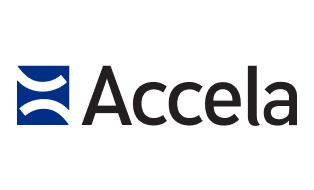In the 1970s, the U.S. Congress officially established August 26 as “Women’s Equality Day,” to commemorate the passage of the 19th Amendment that gave women the right to vote. The day serves as an opportunity to appreciate the work, victories, and sacrifices of women trailblazers, as well as to examine all that is left to do in the quest for equality.
In the government technology sector, there have been many gains in women in leadership, but there is still much ground to cover. During the 1980s, only six women served as their nation’s first head of state; by the 1990s, this number jumped to 16, and today the number is 20 – progress, but still hamstrung. In the U.S. specifically, as of 2020, only 36% of elected seats in local government are held by women. I am, however, encouraged to see recent news of the first female governor of New York, Lt. Gov. Kathy Hochul, prioritizing female representation as she builds out her cabinet.
Women’s representation in government has improved, yet when we consider the number of women technologists, specifically, working in government, the figures further fail to reflect us as a nation. Taking a look at women in the government chief information officer role, for example, only 16% are women at the state government level, 12% at the county level, and 24% at the city level (Govtech).
In tech more broadly, nearly 2 in 5 women feel that their gender is a barrier to being considered for their next promotion, and 41 percent of women identified a lack of mentorship as an obstacle to promotion. COVID-19 is only exacerbating these inequalities and disproportionately impacting women in tech (who were 1.6 times more likely to be laid-off or furloughed than their male counterparts).
Women Supporting Women: Mentorship is key to strides in female leadership.
Mentorship is a proven mechanism to improve equality. A network of mentors creates a pipeline for women, operating as models and guideposts to continued growth, increased responsibility, and, ultimately, promotion to leadership positions.
A year ago, I had the privilege of interviewing govtech leader Tye Hayes, recent chief information officer for the City of Atlanta. Her words stuck with me: “Mentoring and coaching are very important to me. As a woman, I have benefited from great relationships. People saw things in me that I didn’t see in myself. That goes a long way. From a technology perspective, and in the roles that we play, we [women] care about people, care about the outcome, want what we deliver to be the best in class — in everything that we do..”
As a female leader in govtech, I take it as a personal responsibility – and encourage others as well – to recognize opportunities for mentorship. Leveraging relationships helps women gain the experience and knowledge they need for leadership positions.
Next Steps: It’s not all on you. Organizations must act.
But, the onus of uplifting women to leadership positions cannot simply fall on other women, or on any specific group of individuals. It is the responsibility of organizations to create space for female role models and mentors, offer practical and effective executive training, train in unconscious bias, and curate resources specifically to support women’s career trajectory.
How can organizations—public or private—do this? By taking direct action and going beyond simply rallying around DE&I and value statements. Government agencies and companies see faster progress when they create clear pipelines for growth and promotion, with standardized measures of performance. And it’s important to keep the focus on all levels of the company—from entry level which ensures a strong pipeline of women, to leadership which ensures women’s unique perspectives are built into decisions. With technology at the underpinning of almost every business and interaction today, it’s important to prioritize women product designers to ensure technology effectively serves half of the consumer base and has ethics and values built in.
Looking Forward: We must continue to learn and grow.
This Women’s Equality Day, I’m humbled to ponder how far we’ve come and all that must still be done. I look forward to joining my Women Executives Channel Advisory Board (WECAB) colleagues Sharan Hildebrand of Hitachi Solutions and Chaitra Vedullapalli of Meylah at Colorado Technology Association’s Women in Technology on September 16, 3:40 p.m. MST. There, we’ll speak further on the above and how individuals and organizations of all types can work to propel women leaders in technology through mentorship and direct action.
I’ve been passionate about elevating women’s roles in organizations my whole career, and it has only strengthened over the years. While the challenges before us to reach true equality are immense, so too are the opportunities to bring about real change and impact – not only of course for women themselves, but for their organizations and countries. As Accela’s Senior Vice President of Marketing and President of the Women Executives Channel Advisory Board (WECAB), I’m still learning and growing. Despite not having all the answers, I’m excited to continue challenging the technology sector to reduce the gender gap in leadership. I’m more hopeful than ever that – with individuals engaging their networks in mentorship and with companies executing against clear gender equality strategies – we’ll see the proportion of women leading in tech become more representative.




